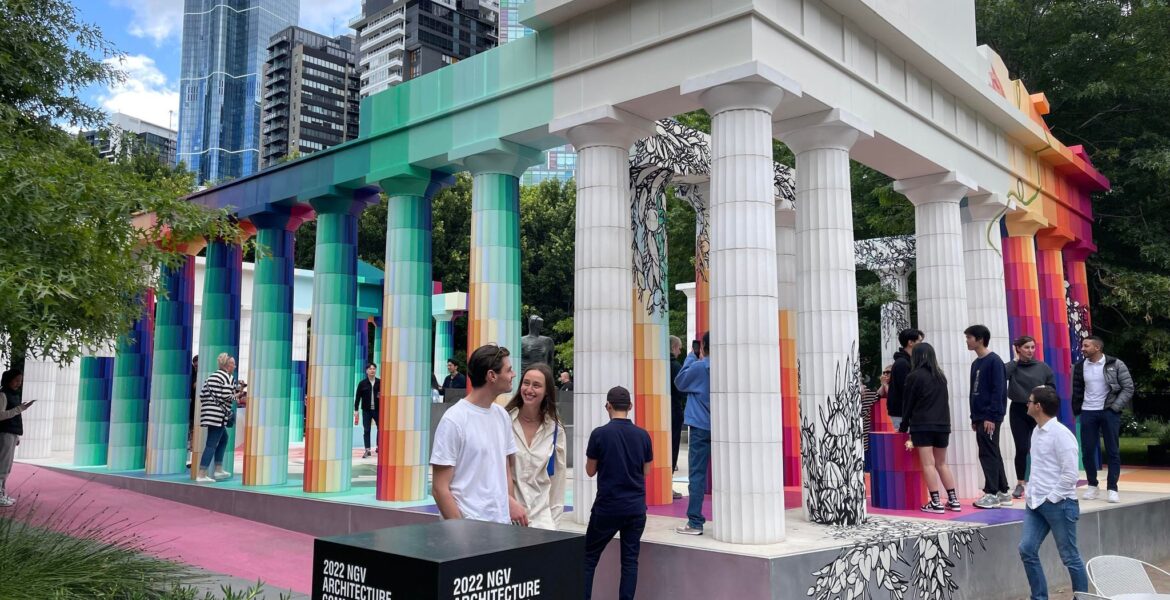The Parthenon, according to the famous Swiss-French architect, Le Corbusier, represents architecture that is the pure creation of the mind. Now, a new artistic installation - dubbed the “Temple of Boom” - has been unveiled to the public in the gardens of the National Gallery of Victoria in Melbourne as a modern-day homage to the iconic temple on the Acropolis in Athens.
The NGV Architecture Commission for some years has been encouraging Australian architects to create a contemporary, site-specific architectural work that is thought-provoking, relevant and resonant and which can also facilitate or inspire conversations, dialogue and reflection.

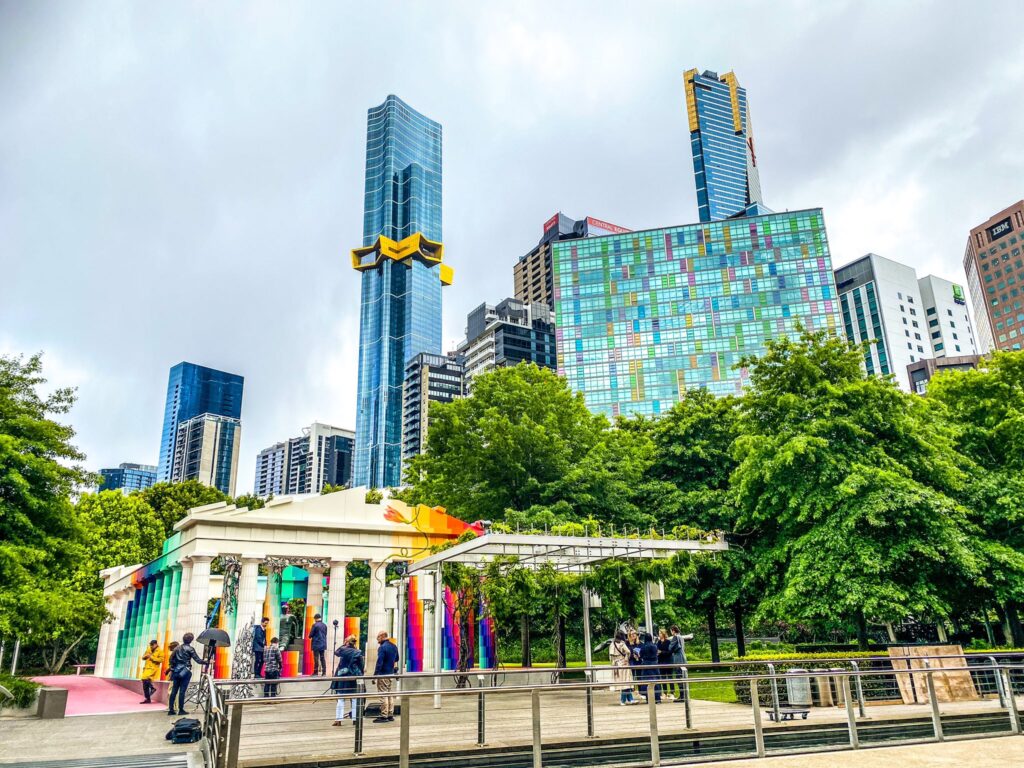
The winning design for this year is the ephemeral Temple of Boom, designed by architects Adam Newman and Kelvin Tsang to celebrate the Parthenon, arguably the most potent symbol of Western art and culture.
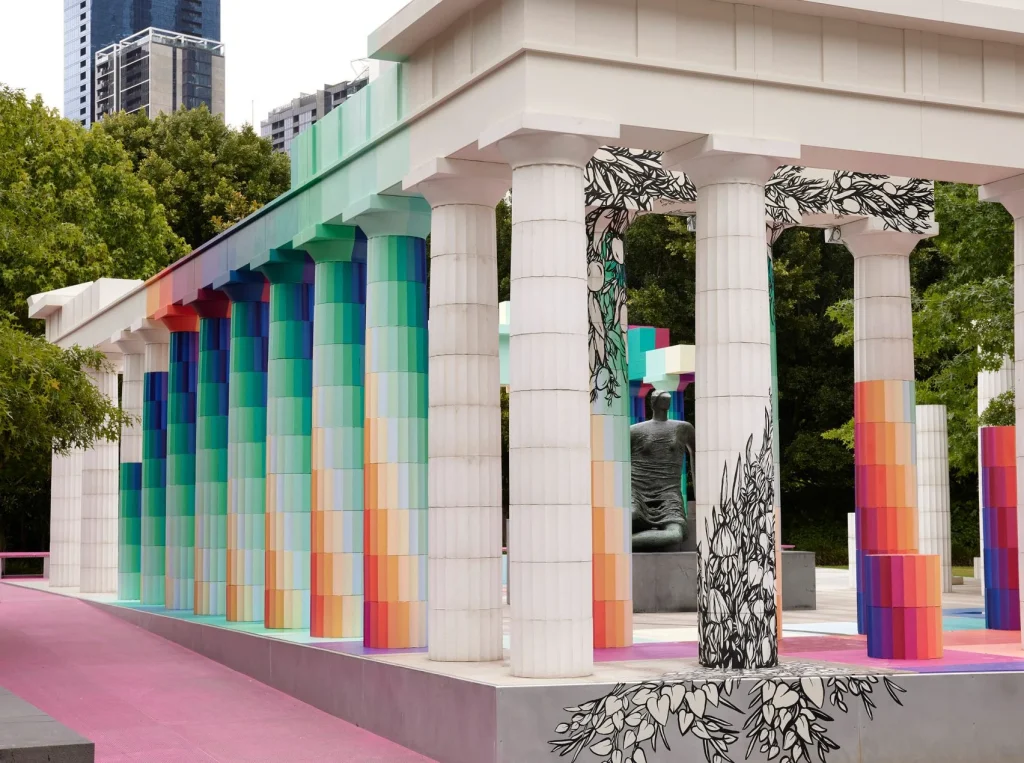
For the architects their glass-reinforced concrete replica - designed at one third the size of the ancient temple - is an evocative re-imagining of the Parthenon. Newman and Tsang have set out to engage the viewer and invite reflection on the conversations that are enabled when this global architectural icon is viewed in a new context, both across time and cultures.
In his The Secret Lives of Buildings Edward Hollis writes that the Parthenon is the architect’s dream: it is perfect; it is what architecture was, is and should be.
This sentiment is clearly echoed by Newman when he recently spoke to The Age newspaper:
"If I could, as an architect, subtly witness the course of a single monument on the planet through the history of human civilization, and from there simply watch the events unfold, then it would definitely be the Parthenon. It is the most charged building in terms of symbolism, politics and geopolitics. And there is a consensus among architects, engineers and archaeologists that we would not be able to build the Parthenon today. It is always there, as a monument of artistic perfection.”
This is achieved through the introduction in and around the structure of artistic overlays, colourful artworks and other rich embellishments so as to imbue the ancient monument with further layers of meaning.

Collaborating artists, borrowing from democracy’s original sculptors, will be encouraged to decorate the structure with their own expressions and will enjoy a relatively free rein over the depth and perspective of the public space.
Already, three local artists have left their mark.
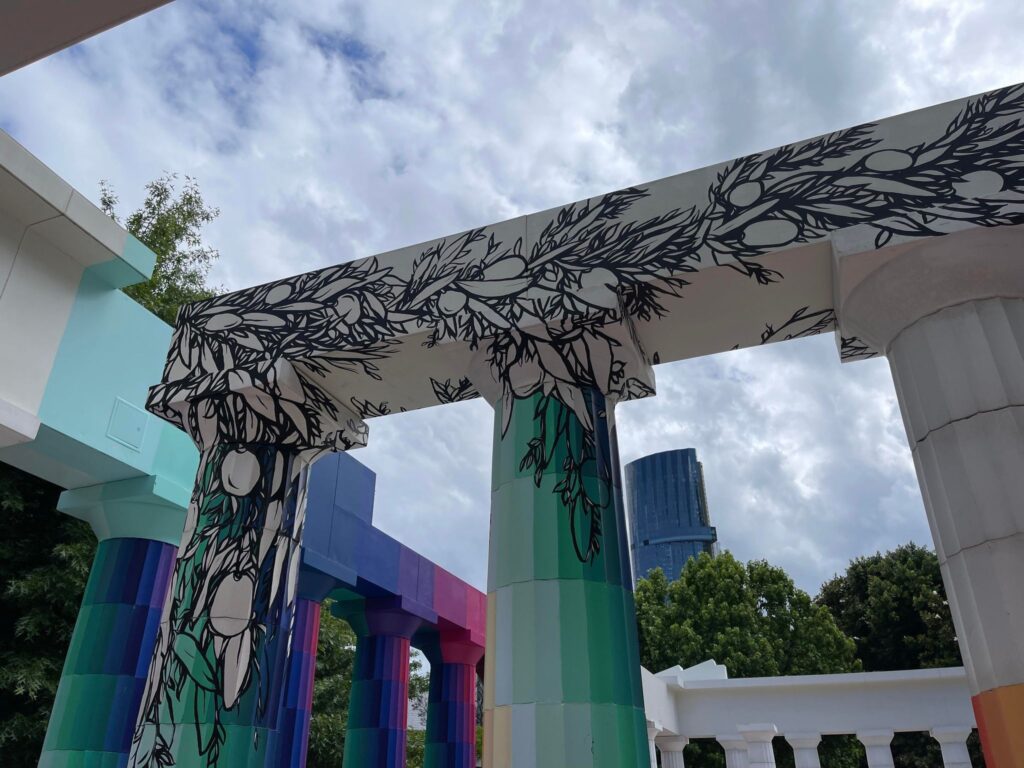
One of them, Drez, has cleverly used colour and form to play with the art historical perspective of the Parthenon as bright colours define the pillars of the temple. The olive tree and other natural motifs are the work of the muralist and illustrator, Manda Lane, whilst David Lee Pereira, a visual artist, has adorned the temple with large and colourful floral motifs.
As the classical archaeologist Jennifer Neils has written, in its inclusiveness the Parthenon exemplified the city’s participatory democracy; in its contests are demonstrated the competitive spirit of its people; and with its prizes are displayed the skills of its artisans and the wealth of its produce.
The Temple of Boom will remain in place until August 2023 and during that time will play host to different events and gatherings. The NGV plans to engage with other institutions and groups, such as the Hellenic Museum, as well as invite more artists and musical performers to enhance the aesthetic, historical and cultural appreciation of the monument of monuments.
There are also sure to be debates and presentations - recalling the orators of Classical Athens - to enliven the visitor's experience and encourage public participation in the installation.

Ewan McEoin, the Senior Curator of Contemporary Art, Design and Architecture at the NGV, is very pleased with the media attention that the installation has received to date and is confident that this will encourage a big audience over the summer. According to McEoin, the Parthenon is instantly recognisable as it is a building which has saturated the psyche of the world and is very much part of everybody's visual lexicon.
But viewers will also be encouraged to reflect:
“The idea was to do it like a durational work with layering over time. If you go to ancient Athens or Rome and you dig a hole, you find what was built before, and that city is evolving in layers. So we are thinking it is more of an allegory to that reality. It is a moment where, conceptually, we're asking people to consider not only the effects of time, but also that things change. And change is not necessarily always positive. Buildings embody so much of our cultural history.”
The Parthenon has in fact inspired many because of its perceived foundational status as a democratic project from inception to completion.
In 1983 it was used as an aesthetic and political archetype of democracy by the Argentine conceptual artist, Marta Minujín, for her project, the Parthenon of Books, which saw a full-scale model of the Parthenon erected in a public park in Buenos Aires. The ‘sculptural adornment’ which covered the columns, frieze and pediments of this temporary temple comprised over 20,000 books that had been banned by the civilian-military dictatorship, thereby effectively giving the books a new life within the walls of the Parthenon.

This homage to democracy was reprised in 2017 in the German city of Kassel; only this time the reimagined Parthenon of Books was a much larger restatement of Classical Athenian participatory democracy in action.
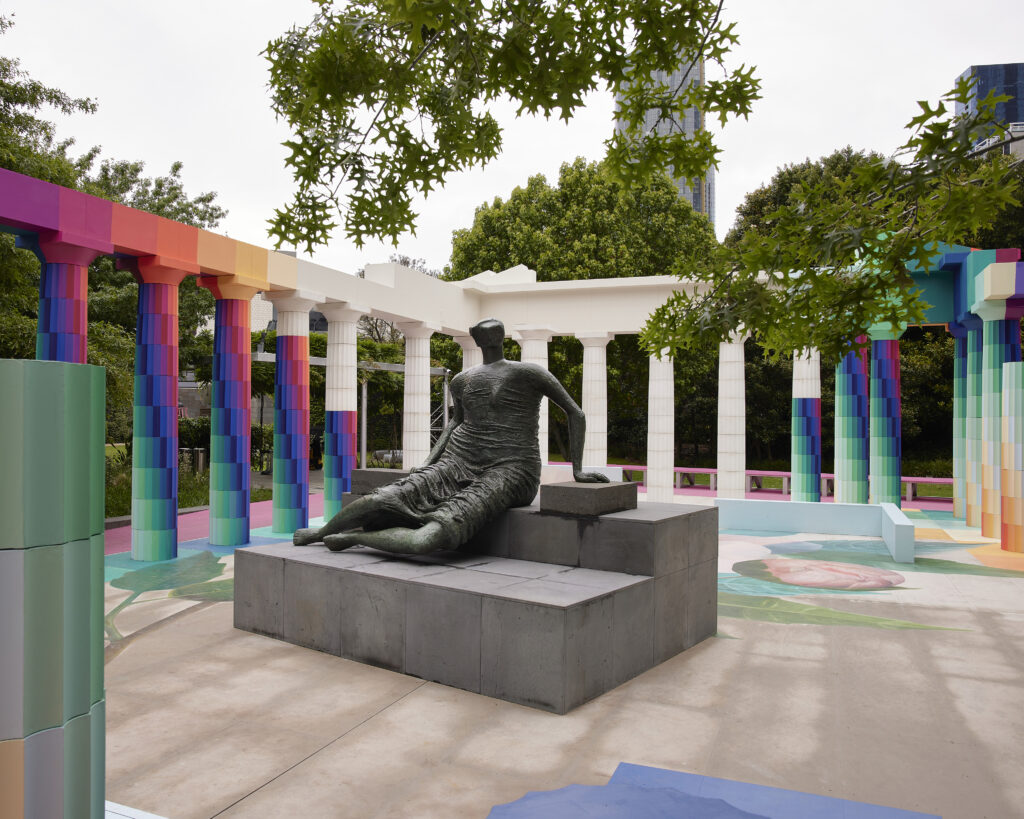
In Melbourne, the Temple of Boom now complements an open-air sculpture courtyard that features the UK sculptor Henry Moore’s bronze cast sculpture, Draped Seated Woman, which was acquired by the NGV in 1960.
Moore’s work depicts a figure draped in a gown, the folds of which speak to the influence of classical Greek art on the famous sculptor and most probably recalling the sculpture of the goddess Hestia from the Parthenon’s East Pediment on display in the British Museum.
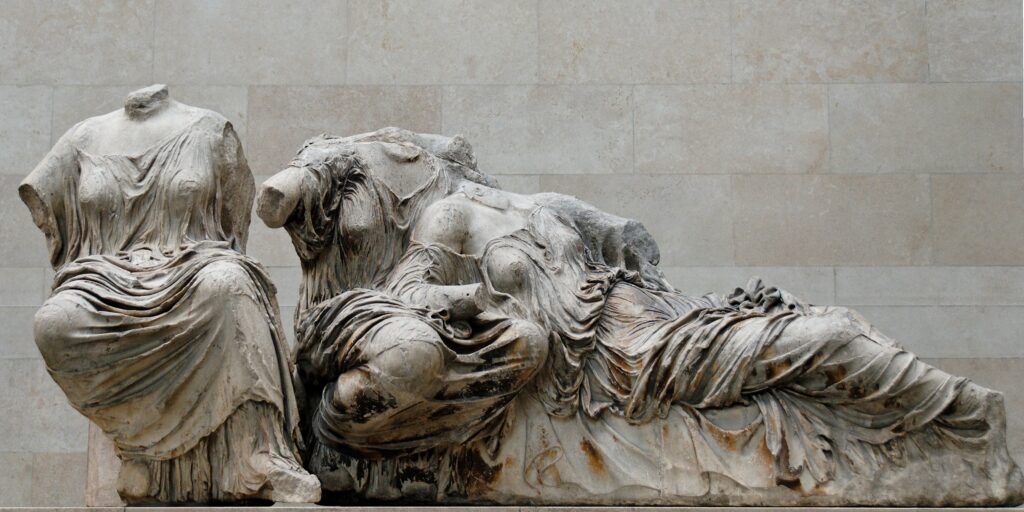
Moore had viewed the so-called Elgin Marbles at the British Museum and was impressed with the drapery of the marble figures in reclining poses, which seemed to emphasise the tension in a figure and at the same time imbued the sculpture with poise and alertness. Moore wrote that the drapery on ancient Greek sculpture was so sensitively carved that it gave the impression of light, flimsy material, wet with spray, being blown against the body by the wind and thereby revealing the form more effectively than if the figure were nude.

In February 1951 Moore went to Athens and his ecstatic reaction on seeing the Parthenon for the first time was barely contained in this letter written to the British art historian, Kenneth Clark:
“The Acropolis is wonderful – more marvellous than ever I imagined – the Parthenon against a blue sky – the sunlight and the scale it gets against the distant mountains can’t be given by any photograph – It’s the greatest thrill I’ve ever had.“
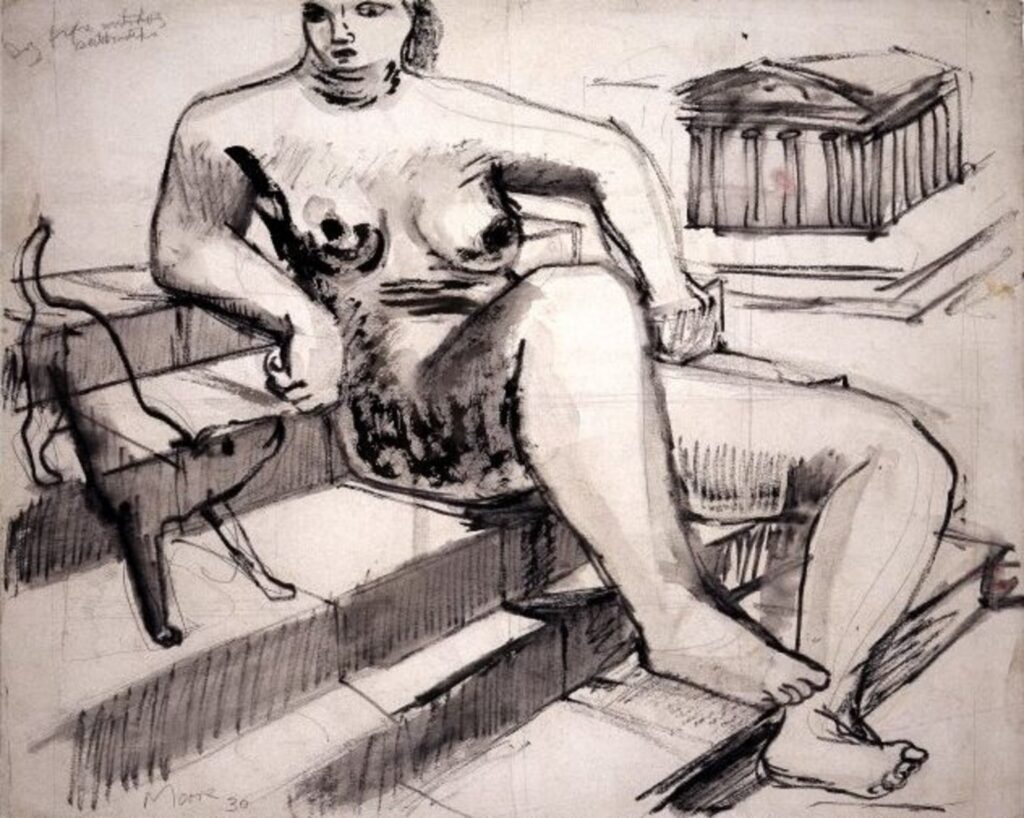
The Temple of Boom is therefore a natural fit in this urban landscape.
One might also enquire whether the Temple of Boom makes a statement about the vexed question of the Parthenon Sculptures taken by Lord Elgin more than 200 years ago and which currently dwell in the Duveen Gallery of the British Museum despite a rising chorus of demands for their reunification in the purpose-built Acropolis Museum in Athens?
The architects of this reimagined Parthenon down under are under no illusions.
In an interview with the Guardian newspaper, Newman and Tsang acknowledge that this historical cultural property dispute was in their mind when designing the temple:
“One of the critical aspects of this building is that any manner in which you consider it or discuss it becomes incredibly loaded. It is probably just a matter of time before the British Museum and the British government agree to return. There are few arguments on the retain side. Our project is part of the conversation.”
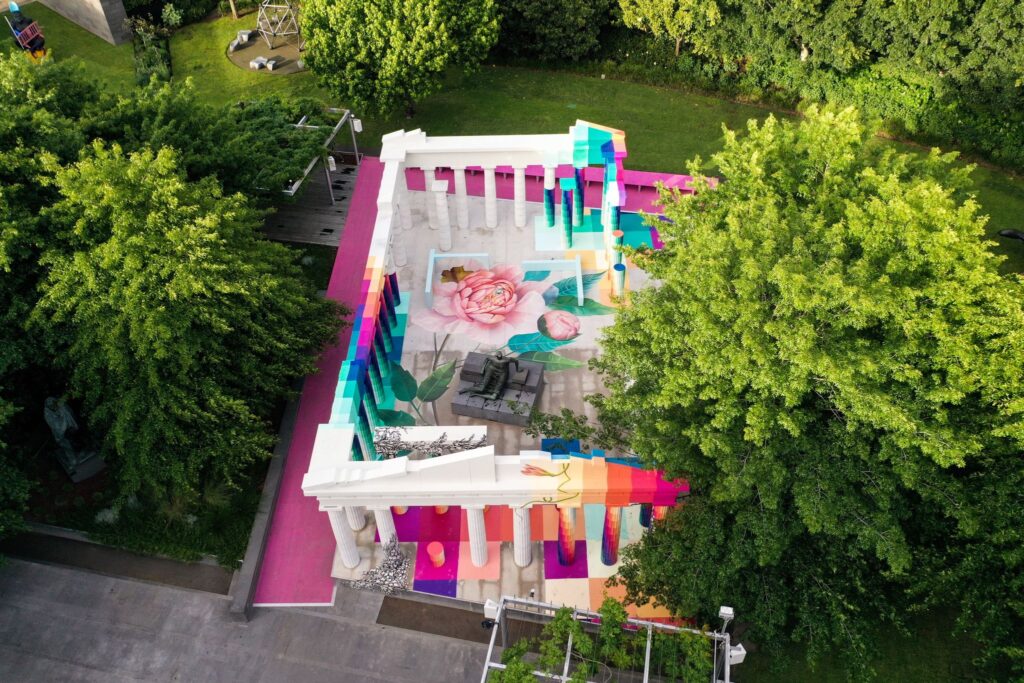
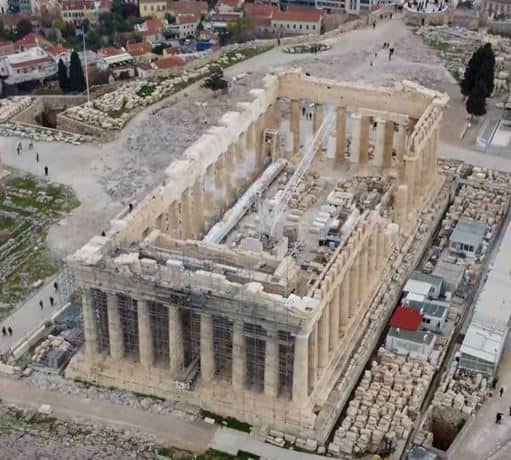
The Parthenon is a global architectural icon and a beacon of Western civilisation. The National Gallery of Victoria’s sublime ode to the Temple of Democracy is a perfect way to celebrate the architecture, art and culture from Classical Greece as it has evolved over the ages.
And along that journey the citizens of Melbourne can join the conversation for the return of the Parthenon Sculptures.
George Vardas is the Arts and Culture Editor and also co-founder of the Acropolis Research Group

